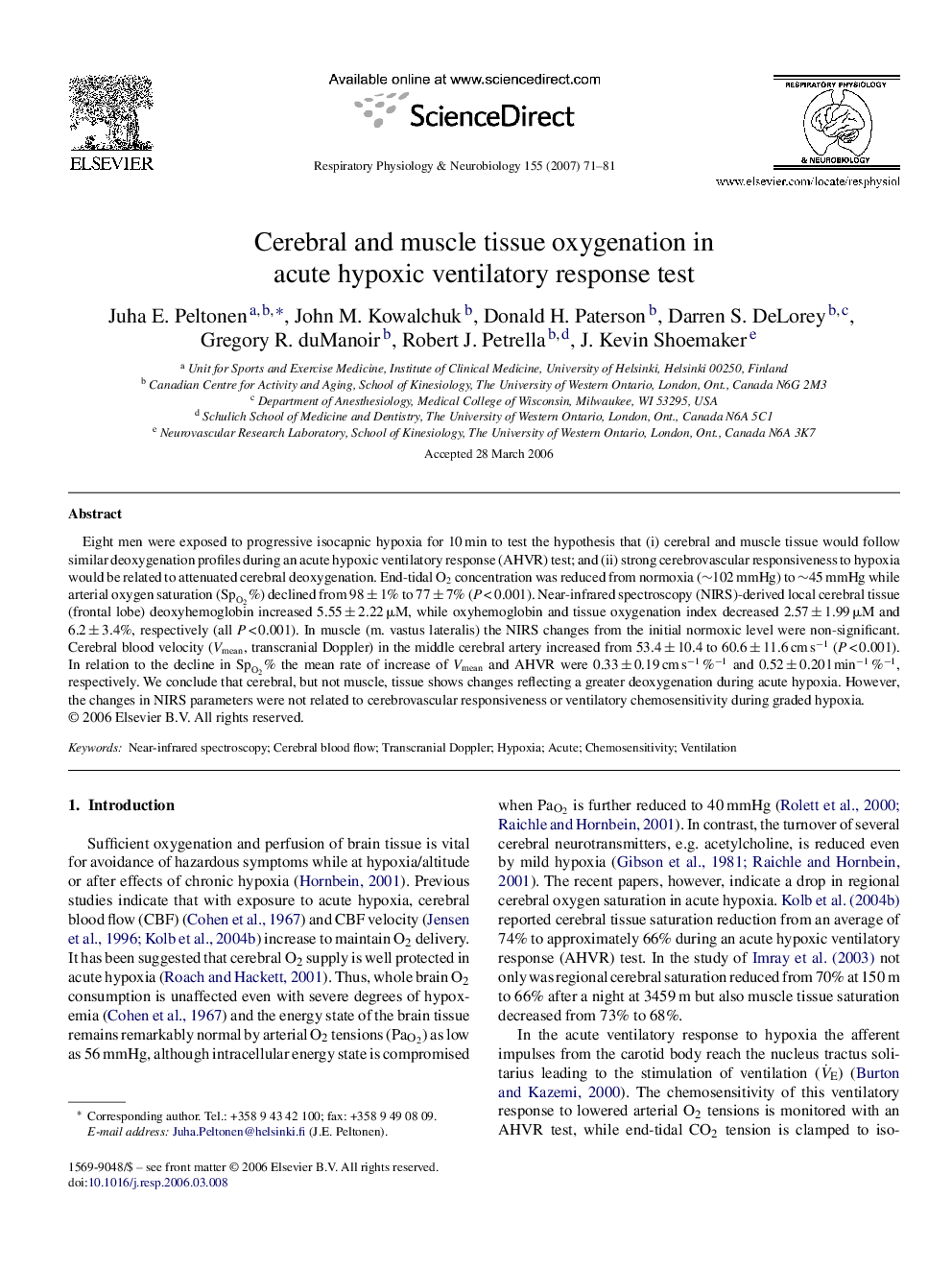| Article ID | Journal | Published Year | Pages | File Type |
|---|---|---|---|---|
| 2848559 | Respiratory Physiology & Neurobiology | 2007 | 11 Pages |
Eight men were exposed to progressive isocapnic hypoxia for 10 min to test the hypothesis that (i) cerebral and muscle tissue would follow similar deoxygenation profiles during an acute hypoxic ventilatory response (AHVR) test; and (ii) strong cerebrovascular responsiveness to hypoxia would be related to attenuated cerebral deoxygenation. End-tidal O2 concentration was reduced from normoxia (∼102 mmHg) to ∼45 mmHg while arterial oxygen saturation (SpO2SpO2%) declined from 98 ± 1% to 77 ± 7% (P < 0.001). Near-infrared spectroscopy (NIRS)-derived local cerebral tissue (frontal lobe) deoxyhemoglobin increased 5.55 ± 2.22 μM, while oxyhemoglobin and tissue oxygenation index decreased 2.57 ± 1.99 μM and 6.2 ± 3.4%, respectively (all P < 0.001). In muscle (m. vastus lateralis) the NIRS changes from the initial normoxic level were non-significant. Cerebral blood velocity (Vmean, transcranial Doppler) in the middle cerebral artery increased from 53.4 ± 10.4 to 60.6 ± 11.6 cm s−1 (P < 0.001). In relation to the decline in SpO2SpO2% the mean rate of increase of Vmean and AHVR were 0.33 ± 0.19 cm s−1 %−1 and 0.52 ± 0.20 l min−1 %−1, respectively. We conclude that cerebral, but not muscle, tissue shows changes reflecting a greater deoxygenation during acute hypoxia. However, the changes in NIRS parameters were not related to cerebrovascular responsiveness or ventilatory chemosensitivity during graded hypoxia.
